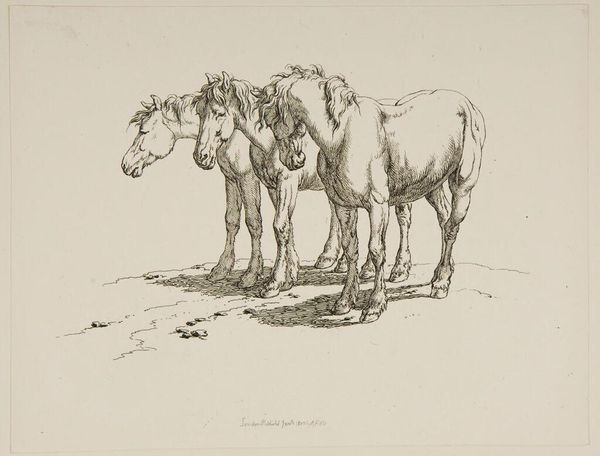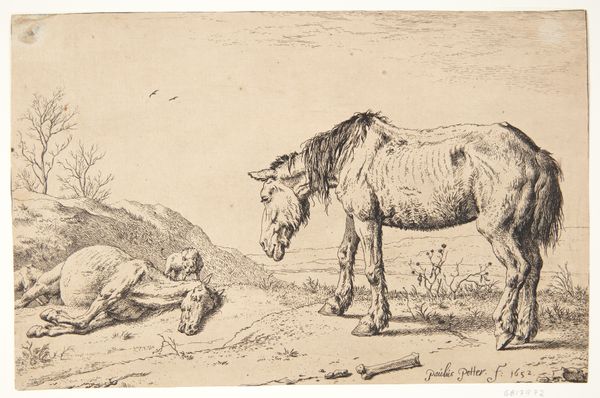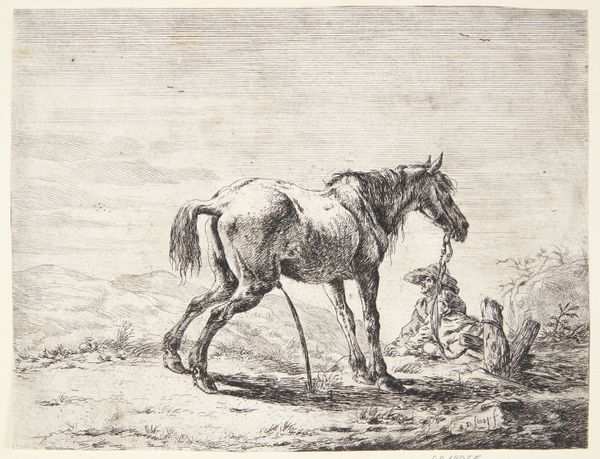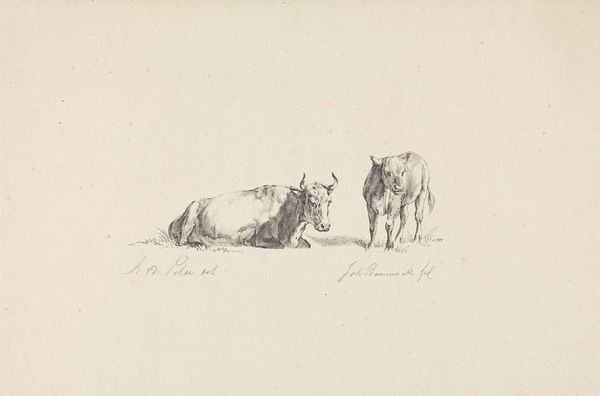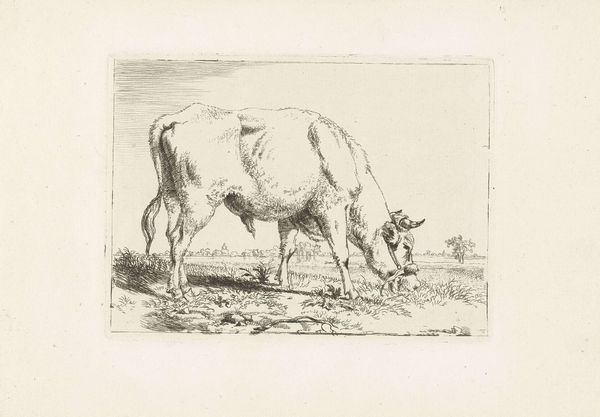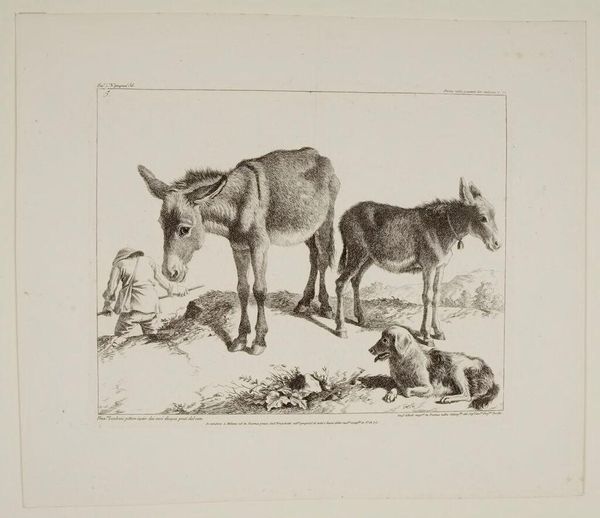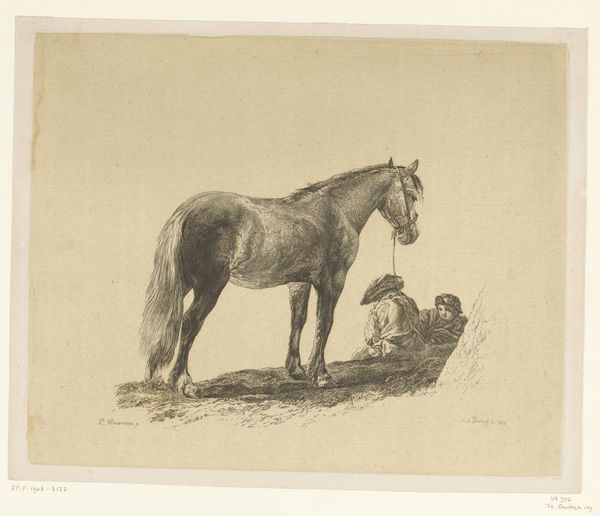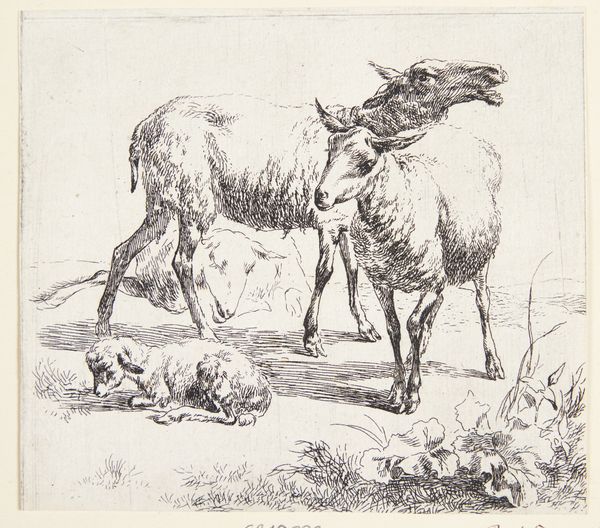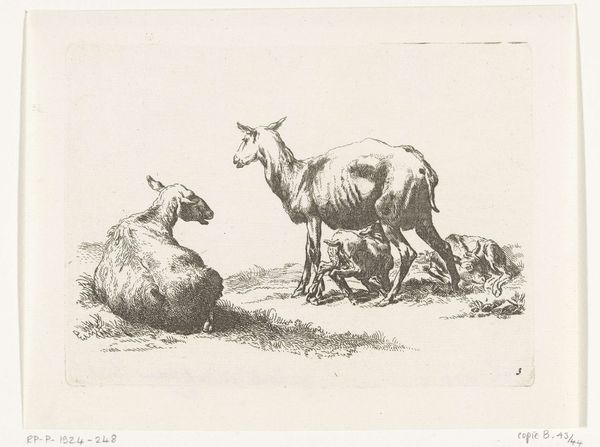
Copyright: CC0 1.0
Curator: Here we have "Donkeys" by Robert Hills, an English artist born in 1769. It’s held at the Harvard Art Museums. I’m immediately struck by the stark realism of these animals, particularly the textures conveyed through the etching. Editor: The lines feel incredibly economic, almost brutal in their simplicity. It really speaks to the labor and the often-overlooked role of these beasts of burden in the era's agricultural landscape. Curator: Indeed. Hills was known for his animal studies, and this piece reflects a broader 19th-century interest in rural life and naturalism, a shift in how the animal kingdom was percieved and portrayed. Editor: The medium, etching, lends itself so well to emphasizing the donkey’s wiry build. This wasn't about romanticising the animals; it was showcasing the tools for the job. Curator: And consider, too, the social context: animal welfare movements were starting, reshaping how the public regarded animals. Hills's work may have subtly participated in that changing dialogue. Editor: It's easy to forget how much the labor of animals contributed to society. This artwork, through its meticulous detail, invites us to reconsider our relationship to the non-human world. Curator: Absolutely. It's a reminder of our intertwined histories and the changing attitudes that continue to shape our understanding.
Comments
No comments
Be the first to comment and join the conversation on the ultimate creative platform.
